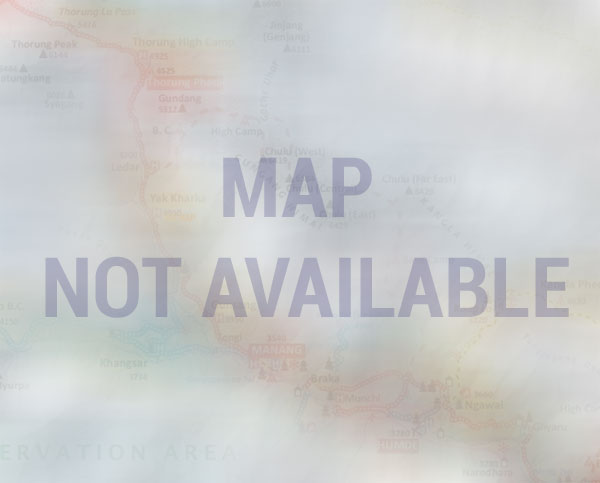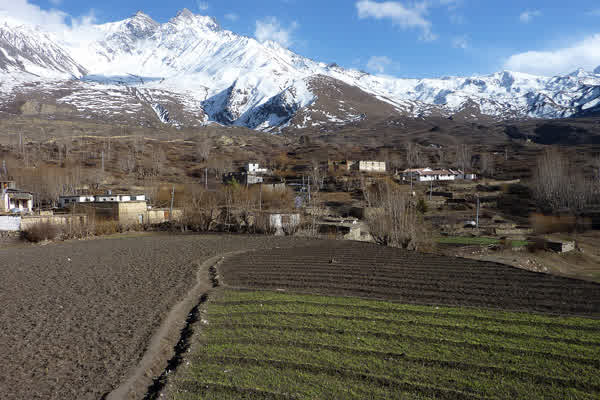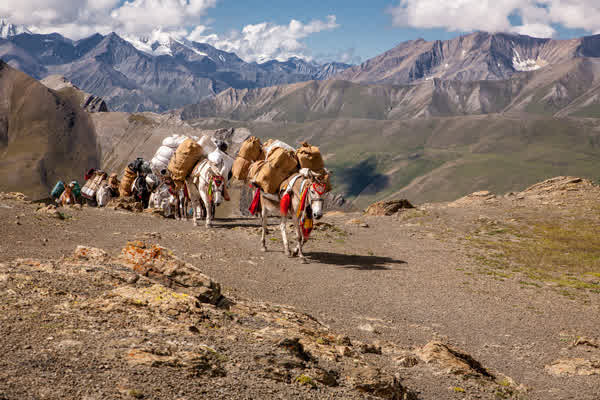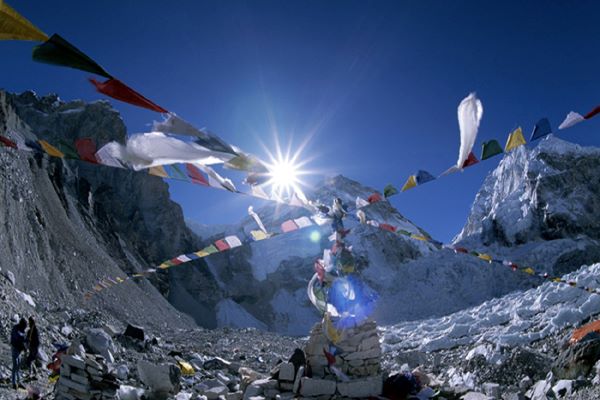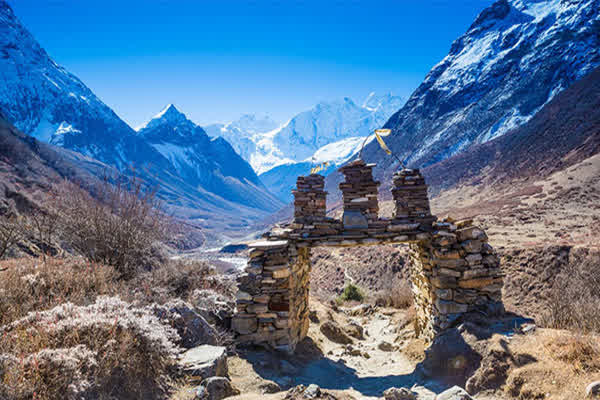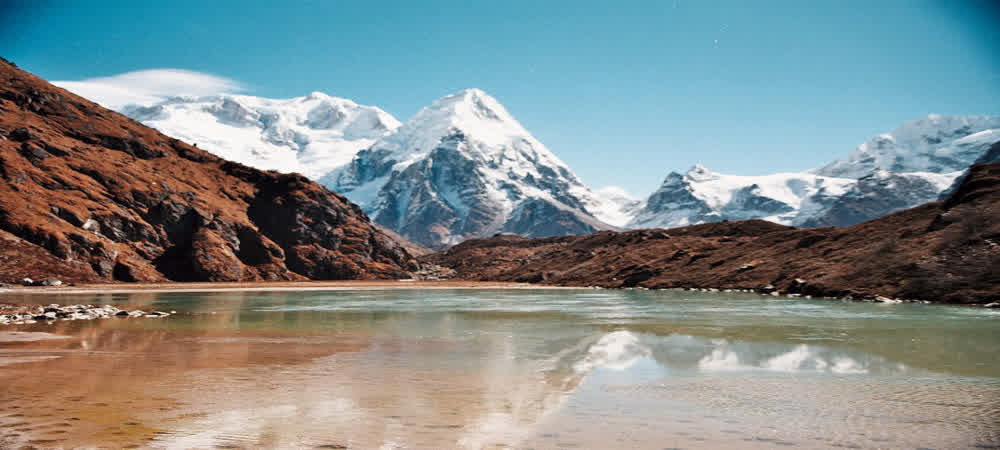
- Overview
- Itinerary
- Price & Dates
- Useful Info
- F.A.Q.
- Gallery
Facts of this Trip
Kanchenjunga Base camp trek
Kanchenjunga is the third highest of the world’s peaks and one of the most remote trekking areas in the Nepal Himalayas. Kanchenjunga route trek takes you from the south-eastern corner of Nepal. This trek is one of the greatest mountains in the world. It is one of Nepal’s hidden trekked areas and certainly one of its most beautiful.
This trek starts from Kathmandu fly to Suketar via Biratnagar. This trek is walking through lush rhododendron forests you climb on into high alpine terrain beyond the village of Gunsa. A camp established high above this village that provides astounding views of Kanchenjunga’s South face. Kanchenjunga Base Camp is imaging. Returning to Gunsa you then cross the Lapsung La pass and trek on the Yalung Glacier. This really is still exploratory trekking and you must be prepared to take the trail as it comes. But to look up at Kanchenjunga towering south face is easily rewarding enough for your efforts. Retracing your route to Suketar you return to Kathmandu, having becomes one of few who have experienced this remarkable and little known region of Nepal. This part of trekking area is known as part of Rai (an indigenous group of Nepal) lifestyle and their way of living. It becomes attraction these days for the trekkers. Many trekkers would like to trek this part.
This trek can also be done by small adventurous groups as a tea-house trek. There are accommodation and food available in all villages. Homestay trek is comparatively least cost so that it is affordable most of you.
Trip Itinerary
Arrival at Kathmandu
At your arrival at a Tribhawn international airport, Kathmandu our representative from Alfresco Adventure Travel wait for you outside at Arrival gate with your Name card. Our team will welcome and collect your baggage at the airport. By formal introduction with the representative and transferred to your hotel. In the evening you will enjoy complimentary welcome dinner in a typical Nepali restaurant with Nepalese cuisine. Overnight at hotel.
Sightseeing around Kathmandu Valley
After breakfast, our office representative and your trekking guide and support staff will meet you on the hotel and discus about all programs and coordinate any last-minute arrangements. After staff meeting, one of our professional tour guides will take you for a sightseeing trip and then back to the hotel. Rest of the day can be used for travelling around Thamel and buying any last minute equipment and other necessities. Overnight at hotel.
Fly from Kathmandu to Biratnagar
Pick up from the hotel in Kathmandu and take an afternoon flight to Biratnagar with your guide from Kathmandu and transfer to the guest house
Early flight from Biratnagar to Suketar (2,320m) - 30 mins. Trek to Lali Kharka (2,276m)
A half an hour flight will take us to Suketar Airport in Taplejung where we will be welcomed by the ground staff and porters. The crew will arrange your gear as you have lunch after the flight. In the afternoon we start with an easy 2- to 3-hour walk along the ridgeline to Lali Kharka, a grazing area.
Suketar to Mitlung (921 m/3,021 ft.)
We officially kick-start the day with a downhill walk to Mitlung. The trails throughout the lower sections of the Kanchenjunga region pass through fertile valleys with beautiful pastures and small villages. We then cross Hangdewa River and walk alongside the raging Tamor River. As we gradually head in a northerly direction the trail steepens after a few hours before a final descent of 350 meters on a muddy trail to Mitlung. We spend the night there.
Mitlung to Chirwa (1,270 m/4166 ft.)
The trail ascends and descends steadily as we make our way towards the village of Sinwa. We continue trekking downhill until we reach Tawa. At Tawa, we ascend to some heights and cross the suspension bridge at Thiwa. We pass a beautiful rural landscape along the way and reach Chirwa, a beautiful Limbu village with few lodges, tea shops etc. We spend the night at Chirwa.
Chirwa to Sukathum (1,576 m/5,169 ft.)
The trek from Chirwa to Sukathum passes through varied landscapes such as cardamom fields and dense forests. We trek uphill for some time then descend to the lush green fields below and continue trekking along the Tamor River passing through a dense forest. It’s both uphill and downhill trek until crossing the Ghunsa River after which we reach Sukathum and spend the night there.
Sukathum to Amjilosa (2,308 m /7,570 ft.)
Trekking from Sukathum to Amjilosa is challenging. After crossing the suspension bridge outside Sukathum we enter a dense forest, ascend the steep trail, descend and cross the river again. We also climb a gorge from the bottom and pass by Solima village and descend again to the level of the river. All in all, this day’s trekking is rather tough. Therefore, it is advisable to be very careful especially while walking the trail that passes the gorge. We later follow a tricky trail which goes both uphill and downhill until reaching Amjilosa where we spend the night.
Amjilosa to Gyabla (2,730 m /8,954 ft.)
We start trekking from the river bank, pass through a dense forest of bamboo, fir, and rhododendrons eventually reaching a small stone house by the river. We then climb uphill crossing a few small bridges along the way. Here, we get to enjoy the company of stunning waterfalls that originate from the mountains. After yet another short uphill walk we reach the Tibetan settlement to Gyabla.
Gyabla to Ghunsa (3,595 m/11,792 ft.)
We descend down the river and notice the valley as it slowly opens up before reaching Phale, a Tibetan refugee settlement where it is possible to purchase handicrafts and homemade rugs from locals. After purchasing a few souvenirs we travel through conifer and pine forest and reach the Sherpa village of Ghunsa where we spend the night. This place is known for its hydroelectricity plant and the fact that more than 20 prominent conservationists met a tragic end in a helicopter crash.
Acclimatization day at Ghunsa
We take care to spend time acclimatizing around Ghunsa before continuing our next day’s trek. We recommend you to stay active even on a rest day as it is better than being idle while on a trekking journey. Therefore, we take a short hike towards the Laspsan La monastery through the lush green forest. Come back to Ghunsa by afternoon and relax.
Ghunsa to Kambachen (4,050 m/13,284 ft.)
From Ghunsa we trek further north along the river bank which presents us with magnificent mountain scenery. We pass through meadows full with beautiful wildflowers, rhododendron and pine forests. We cross a bridge at Rampuk Kharka, continue past the waterfall and cross the tricky section of the landslide. After crossing the landslide area we begin to see the spectacular view of Mt. Jannu. Further exploring and tackling the tricky mountain trail we finally arrive at Kambachen and spend the night.
Acclimatization Day at Kambachen
We take yet another day for acclimatisation at Kambachen which is reserved to accommodate participants in high altitude and also to observe if anybody in the group has any symptoms of altitude sickness. The overall idea for this day is to relax- take a bath and/or explore the Nuphchu Khola Valley area. We spend yet another night at Kambachen.
: Kambachen to Lhonak (4,780 m/15,678 ft.)
Today will be another challenging day and an early start is needed. We trek through rocky fields and large boulders on the hillside along the riverbank and arrive at a waterfall. We then cross a bridge to Ramtang monastery. We then come across a landslide section which we must pass through at a steady pace before descending to the river and finally arriving at Lhonak.
Trek to Pangpema/Kanchenjunga North Base Camp (5,388 m/17,673 ft.)
We trek along the Kanchenjunga Glacier to spend a night at Pangpema, Kanchenjunga base camp on the north side. We urge you to be careful around the rockier sections as they are prone to landslides. After a short while, you reach Pangpema, a flat grassy base camp. Climb a little higher and enjoy the splendor of Jannu, Kanchenjunga and Chang Himal.
Trek back to Kambachen (4,050 m/13,284 ft.)
We retrace our path to Lhonak and continue down the valley to Ramtang Monastery. The return journey offers a different perspective of the mountains Kanchenjunga, Taple Shikhar, Gimmigela, and Mera Peak among others. Due to the descending nature of this trek, we will reach Kambachen by evening and spend the night there.
Kambachen to Ghunsa (3,595 m/11,792 ft.)
It’s essentially the reverse of our Day 12 trek. We descend to Ghunsa from Kambachen which means that we get to enjoy the beautiful forests along with a backdrop of impressive mountain scenery. Overnight at Ghunsa
Ghunsa to Sele Le (4,290 m/14,071 ft)
It’s a steep trek upward from Ghunsa to Sele-Le. Upon reaching Sele Le we climb through a dense forest of moss, rhododendron, and juniper. Lunch will be served in an appropriate place with the availability of water. We spend the night in Sele Le.
Sele Le to Cheram (3,870 m/12,694 ft.)
We do an uphill trek and enjoy the mesmerizing south side view of Jannu Himal and Makalu (the world's 6th highest mountain). Today is a strenuous trekking day as we cross several passes- Sinion La, Mirgin La, and Sinelapche Bhanjyang. We then make a steep descend to Cheram and spend the night there.
Cheram to Ramche (4,580 m/15,022 ft.) and return back to Cheram,
We ascend past the snout of the Yalung Glacier and walk alongside the Simbuwa Khola, pass through Lapsang village and reach Ramche. While there, we walk further up the valley or ascend a ridge for a tremendous view of blue sheep. We then follow the stream before climbing on the moraine top until confronted by Kanchenjunga southern face. We walk further ahead for a glimpse of the Jannu Himal. We can even consider continuing to Oktang Monastery. Descend and spend the night at Cheram.
Cheram to Tortong (2,995 m/9,824 ft.)
As we descend to Tortong we first encounter two trails. One trail is the one we took while descending down from Sele Le. However, we ignore this route and descend further down to the trail alongside the Simbuwa Khola. We enjoy the lush rhododendron forest along the way.
Tortong to Yamphudin (2,080 m/6,822 ft.)
While descending from Tortong to Yamphudin we pass through Lasiya Bhanjyang which involves walking up through trees and area of landslides. The terrain changes after every monsoon but by the middle of October, it should be stable with a route through. Walking further down we reach the village of Yamphudin, a village inhabited by Sherpas, Limbus, and Rais.
Yamphudin to Yangpang (1,007 m/3,304 ft.)
We descend from Yamphudin, cross the bridge at Samekham and continue following the Kabeli Khola. We pass through Mamankhe which houses the Limbu Museum and Cultural Center. We then cross the bridge over Khaksewa Khola and ascend through the cardamom forest, pass by a few villages and descend further down to Yangpang. Overnight at Yangpang.
Yangpang to Thorpu (1,500 m/4,290 ft.)
Instead of going back to Taplejung we descend down to Thorpu. By opting for Thorpu we will not only be saving us time but will also get to enjoy the landscape of a different route. While descending to Thorpu we pass through some really beautiful terraced villages, where the people are very interested to see you. We spend the night in Thorpu and enjoy the hospitality of the villagers.
Thorpu to Birtamod (300 m/ 984 ft.)
We are most likely to drive from Thorpu to Birtamod which is a lively Terai town in Eastern Nepal. Along the way, you will notice the climate getting warmer with a landscape that is different from the mountains and the hills. The town boasts a number of good accommodation facilities, therefore, we spend the night in Birtamod.
Drive from Birtamod to Bhadrapur then Fly to Kathmandu
The drive to Bhadrapur from Birtamod is only of short distance. We fly back to Kathmandu from Bhadrapur Airport. Upon arriving in Kathmandu you can take a rest and relax throughout the day in your hotel or if you are interested in taking souvenirs for your loved ones, you can shop around the tourist area of Thamel. Alfresco Adventure Travel will be hosting a fantastic celebration dinner for the successful completion of your Kanchenjunga Circuit Trekking.
Final Departure
Today is your last day with us in Nepal. You will escort to the airport for your onward destination with the unforgettable moment of your life from the wonderful Kanchenjunga Base Camp Trek. Our office representative came at your hotel for pick up and drop you at the airport.
Price & Dates
Upcoming Fixed Departure Date and Offer Price.
Trip Cost Includes
- Arrival and Departure by comfortable Private vehicle
- Domestic air ticket
- All necessary paperwork, Restricted area trekking permits (National Park Permit, TIMS)
- 3 star accommodation in Kathmandu on BB plan (with breakfast)
- Teahouse accommodation during the trek (Include breakfast, lunch, Dinner)
- Welcome and Farewell dinner in typical Nepal restaurant with Nepal food
- All land transportation is arrange as pre the itinerary in a comfortable vehicle
- City tour in Kathmandu with expert guide by private vehicle
- All entrance fees and government and local charges for sightseeing/monument visits as per the itinerary
- An experienced English spoken and government certified trekking leader, guide and assistant trek leader or guide
- Poter service (2 trekkers = 1 porter)
- Staff cost including their salary, insurance and allowance
- Medical kit (carried by your trek leader or guide)
Trip Cost Exclude :
- Your Medical and travel insurance
- Personal Belong items
- Personal expenses, shopping, Beverage bills and so on.
- Tips for staffs
Useful Info
Useful information
Frequently Asked Questions.
Media Gallery
Please click on small photos to have larger view.

